If the founders of Caseville came back today, I’ll bet they would barely recognize the place. In the mid to late 1800s, the little towns along the Great Lakes’ shores were gritty little industry centers. Caseville history in the Upper Thumb was no exception.
What Was Caseville Like in the Late 1800s?
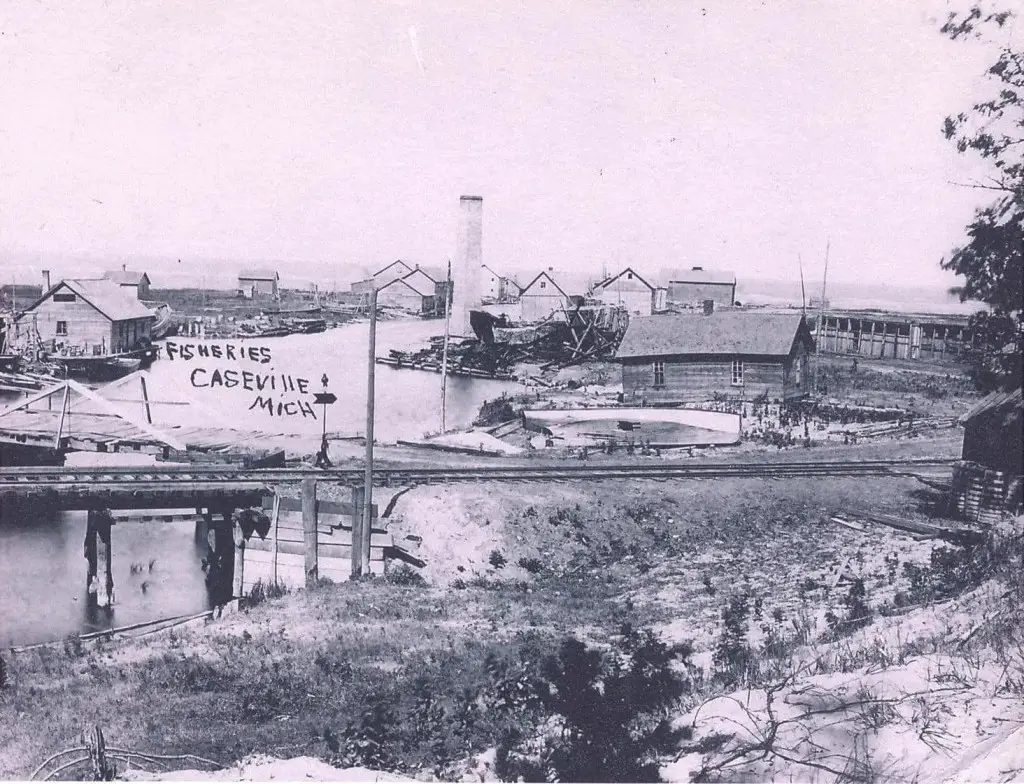
Back then, Caseville was a bustling hub of activity centered around the fishing, lumbering, and shipping industries. The shoreline was dotted with fishing shacks, sawmills, and cargo ships waiting to be loaded with goods for transport. The town was a hive of industrial activity, with the constant hustle and bustle of workers, the deafening noise of machinery, and the ever-present smell of burning wood and bark in the salt blocks.
The town’s landscape was dominated by the towering piles of lumber waiting to be processed and the large fishing nets hanging out to dry. The streets were lined with small, modest homes filled with hardworking residents living off the land and the lake. The town was a tight-knit community where everyone knew everyone else, and people were united by their shared struggle for survival and prosperity.
Fast forward to today, and the Caseville of the 1800s would be unrecognizable to its original founders. The industrial landscape has given way to a modern town filled with cottages, marinas, trendy restaurants, and boutique shops. Once dominated by fishing shacks and sawmills, the shoreline is now lined with picturesque waterfront properties and marinas filled with pleasure boats.
The once gritty, hardworking town has become a popular tourist destination, attracting visitors with its beautiful beaches, outdoor activities, and annual events such as the famous Cheeseburger in Caseville Festival. The town’s economy, once heavily dependent on the fishing and lumbering industries, is now largely driven by tourism and service industries.
Once filled with the constant noise of industrial activity, the streets are now peaceful and quiet, except for the occasional sound of laughter and music from the local bars and restaurants. The close-knit, hardworking community of the past has evolved into a diverse mix of year-round residents, seasonal homeowners, and tourists.
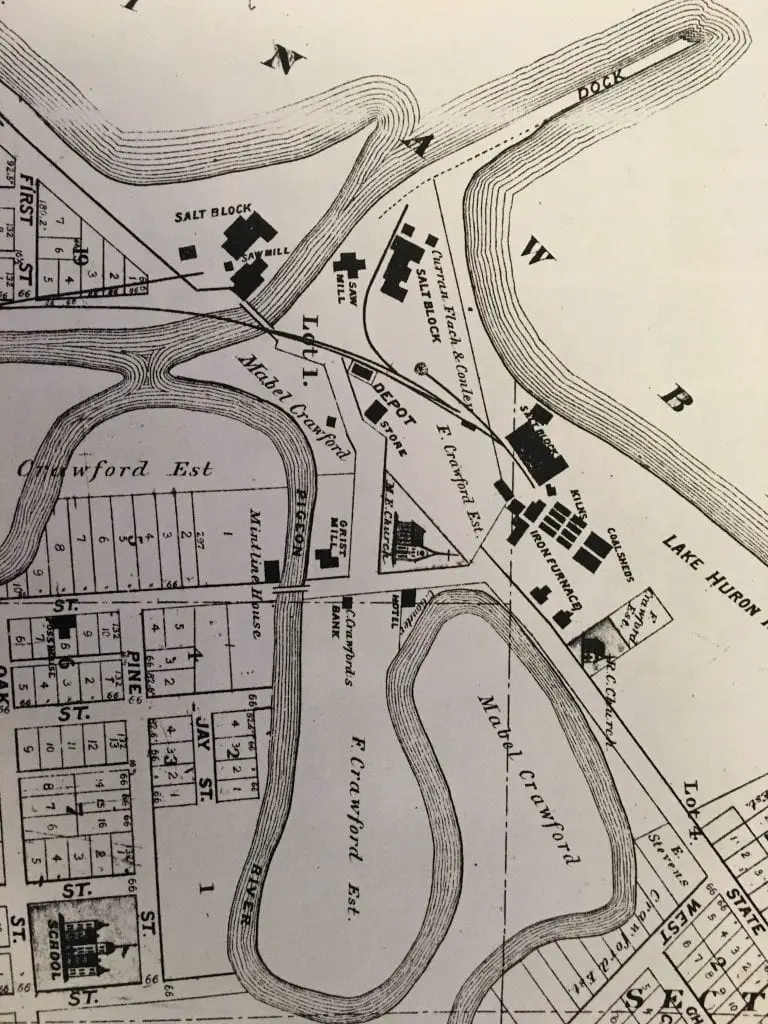
The shore was too sandy to farm, so land next to the water was undeveloped unless a river ran close by. Indeed, except for Bay Port and Grindstone City, all the Upper Thumb towns grew around the river mouth. This included Port Austin, Port Crescent, New River, Huron City, Sebewaing, and Caseville. No discussion of Caseville’s history can be made without a review of its industrial era.
Caseville History of Industry
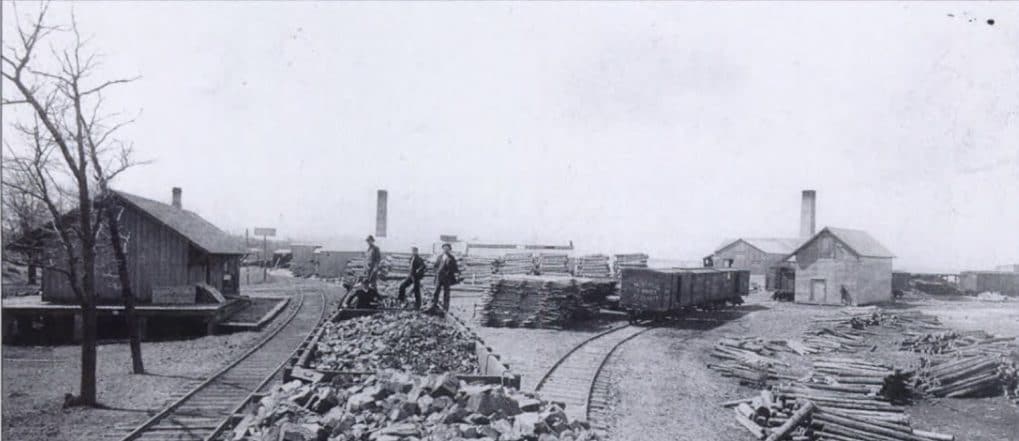
On the site of what is now the Caseville Resort Marina and along Riverside Drive sat the Pigeon River Salt and Iron Works, built in 1873. The investors were S. O. Edison, uncle of Thomas Edison, Sanford, and Francis Crawford. The furnace was moved there from Black River (now Lorain), Ohio. The iron ore was mined from Michigan’s Upper Peninsula and shipped from Marquette and Escanaba. The blast furnace had a capacity to produce 30 tons of pig iron daily. The brick chimney must have been an impressive slight over the harbor basin and Pigeon River; it was the town’s tallest structure at 45 feet high with a 9 ½ foot base.
Local historians like to point out that the bricks from the sawmill and ironworks were salvaged and reused in other buildings in town. Duftys Blue Water Inn is one building where you can see the old bricks in the dining area.
Caseville’s Ties to the US Presidency
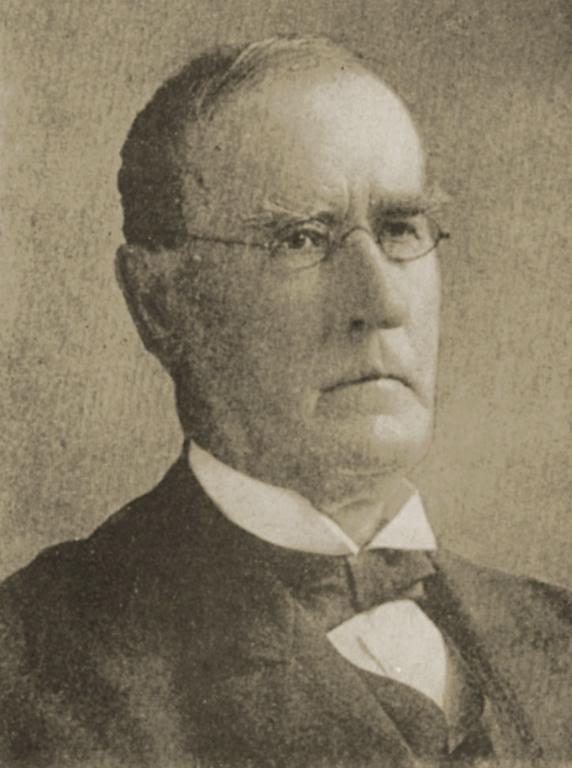
Caseville holds an intriguing piece of history. Among its notable residents was William McKinley Sr., who played a significant role in the town’s local history and the nation’s story as he was the father of the 25th President of the United States, William McKinley Jr.
According to local folklore, McKinley Sr. had a significant investment in Caseville. He was heavily involved in the town’s operations, serving as the superintendent until his retirement in 1876. This position allowed him to shape the town’s development and progress during his tenure.
However, McKinley’s influence extended far beyond Caseville. He was a well-known figure in the iron industry, especially in eastern Ohio. He is credited with pioneering the development of this industry in the region. His innovations and contributions were crucial in shaping the local economy and the country’s industrial landscape during that era.
The iron industry was a critical sector in the United States during the 19th century, driving economic growth and technological innovation. With his leadership and foresight, McKinley Sr. helped lay the groundwork for the industry’s success in eastern Ohio. His legacy, therefore, extends from the small town of Caseville to the broader narrative of America’s industrial history.
Outside his contributions to industry, McKinley’s most lasting legacy is probably his son, William McKinley Jr., who served as the United States President from 1897 until his assassination in 1901. As a father, McKinley Sr. undoubtedly influenced and shaped his son’s values and views, contributing to his rise as one of America’s leaders.
The ironworks was run for about a year, and then, due to the Long Depression (1873-1879), depressed iron prices, and high fuel prices, the operation ceased. The furnace stood vacant and idle for years. The red brick kiln was torn down, and each brick was cleaned for reuse. Today, some of these bricks can be seen in several buildings in Caseville. The Blue Water Inn is one of the most notable businesses where the original chimney bricks were used.
Caseville’s Crawford Mansion
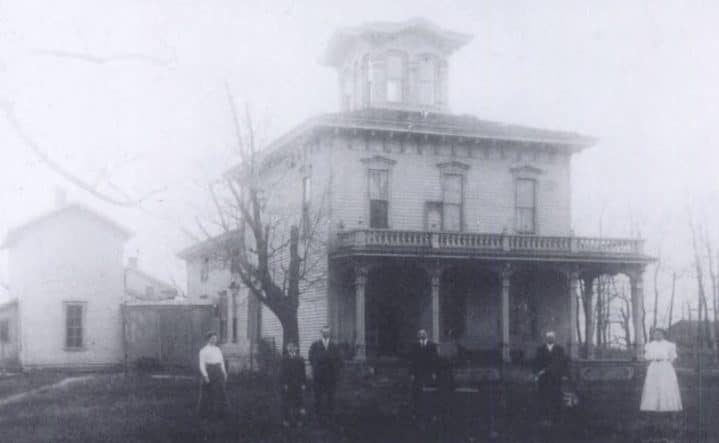
As an early founder of Caseville, Francis Crawford was one of the wealthiest men in the Upper Thumb. In 1856, he built a large Italianate mansion on the top of the bluff overlooking the harbor and town.
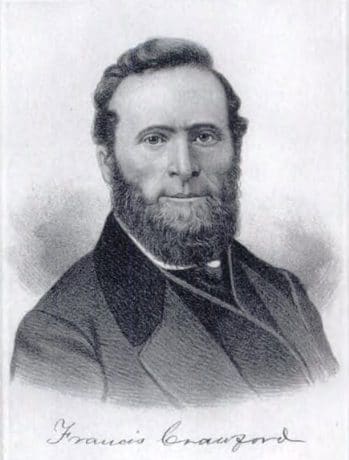
Francis Crawford died in 1885, and the mansion was turned into the DeFord Hotel. The 150-ton house was moved in 2001 next to St Roch Catholic Church, refurbished, and was used as a funeral home and a health clinic.
Shipbuilding in Caseville
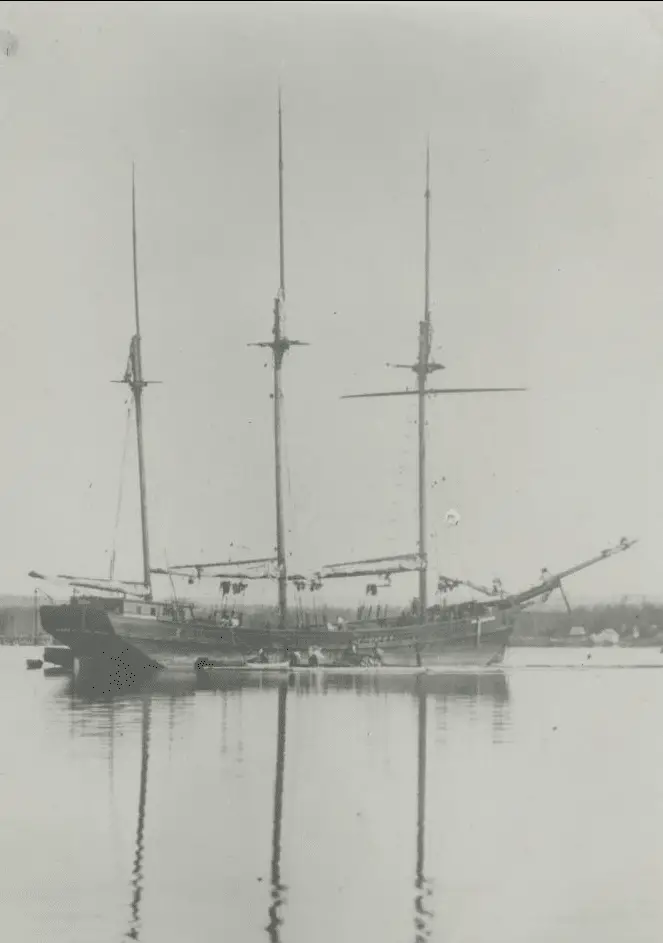
Caseville was considered a huge lumbering town in the late 1800s with lumber yards, industrial-sized evaporators called salt blocks to process brine pumped from deep wells and even ironworks. Shipbuilding in the Great Lakes was also an important industry. In 1861, Francais Crawford built a lake schooner. The “Frank Crawford was a large masted schooner that plied the waters throughout the Great Lakes in the late 1800s.
Caseville shipbuilders took advantage of the oak trees that dominated the area. They were pronounced to be among the best for shipbuilding. Other industrial shipping was produced, including the “Perseverance,” a large lumber barge holding up to 5000 linear feet of finished lumber. The tug towed the barge but eventually wrecked in a storm near Port Huron.
Caseville Village Business Directory 1904
Crawford, Charles. Dealer in Drugs, Patent Medicines, etc. ‘Prescriptions carefully compounded. A nice line of
Cigars, etc.
Critic Publishing Co. is the publisher of the Caseville Critic. Published weekly on Friday. S. H. Cochran, manager. Job printing is neatly and promptly executed.
Gillingham, J. H. Dealer in General Merchandise. A full and complete line of Dry Goods, Clothing, Boots and
Shoes, Notions, etc. Catcher of and dealer in Fresh, Salt, and Frozen Fish.
Hubbard, R. L. & Co. Transact a general banking business. ‘Money loaned on’ good security.
Johnson, L.S. Retired.
McKendrick, Robert W. Livery. Good rigs on short notice. Special attention to traveling men. Rates reasonable.
McKinley, R. R. Dealer in General Merchandise. A full and complete line of dry goods, clothing, shoes, groceries, etc. Produce dealer. Hardware, Buggies and ‘Wagons, Farming Tools, etc,
McLean, Neil. Dealer in Furniture. A full line of Furniture,’ ete.
Poss House. Thomas Conaton, Proprietor. Good accommodations. Under new managément. Call and see us.
Smalley House. C. H. Taack, Proprietor. Rates: $1.50 per day. Steam heat.” Bath room, everything first-class.
Good bar and sample rooms,
Stockmeyer, C. A. Dealer in General Merchandise, Grain and Produce. “A full and complete line of Dry’ Goods, Clothing, Ladies’ and Gents’ Furnishing Goods, Boots and Shoes, Hardware, Stoves, Dress Goods, etc.
Taack, Nienstedt & Co. G. H. Taack, A. Nienstadt. Dealers in Fresh and Salt Fish.
Walsh Brothers. Prop of Hotel El Indo. First-class accommodations. Newly fitted and refurnished. Good bar in connection.
Related Caseville History Stories

History of Ship Building in Caseville – Shipbuilding in the Great Lakes was also an important industry. In 1861 Francais Crawford built a lake schooner. The “Frank Crawford was a large masted schooner that plied the waters all over the Great Lakes in the late 1800s.

History of Coal Mining in Sebewaing – Discovery of surface and shallow coal veins resulted from grist mill construction in 1835 west of Jackson, Michigan. State geologist Douglas Houghton confirmed the existence of coal deposits in 1837. Over the next two decades, residents took surface coal for personal and local use. After the Civil War, shallow mine shafts were dug all over Michigan. Sebewaing was a chef producer of coal well into the late 1800s.

The Upper Thumb led in the Production of Salt – Towns such as Caseville, Port Crescent, Port Austin, New River, Port Hope, Harbor Beach, and White Rock on the south side of Saginaw Bay; and Tawas City, East Tawas, Au Sable, and Oscoda to the north all started salt operations. By 1888 there were 127 companies listed in Michigan producing 5.2 million barrels of salt annually. Michigan produced almost half of the nation’s salt.
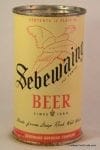
History of the Sebewaing Brewing Company – Sebewaing Brewing Company, was a local Michigan beer company that served the Michigan Thumb market. Six-packs of long necks cost a little less than a dollar plus deposit. True to its German roots, the brewery offered an all Malt Pilsner, Lagers, and Bock style beers.
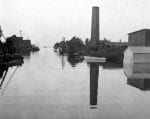
History of Caseville Harbor Compares to Leland’s Fishtown – The Caseville Harbor history photo was likely taken from the railroad bridge that once crossed the Pigeon River. The plat map from a 1935 WPA project shows the village and railroad lines leading into the area known today as Caseville Beach. In 1964 the Caseville Harbor break wall was built. It was made with huge boulders and rubble fill an extended 1,780 feet into Saginaw Bay.




